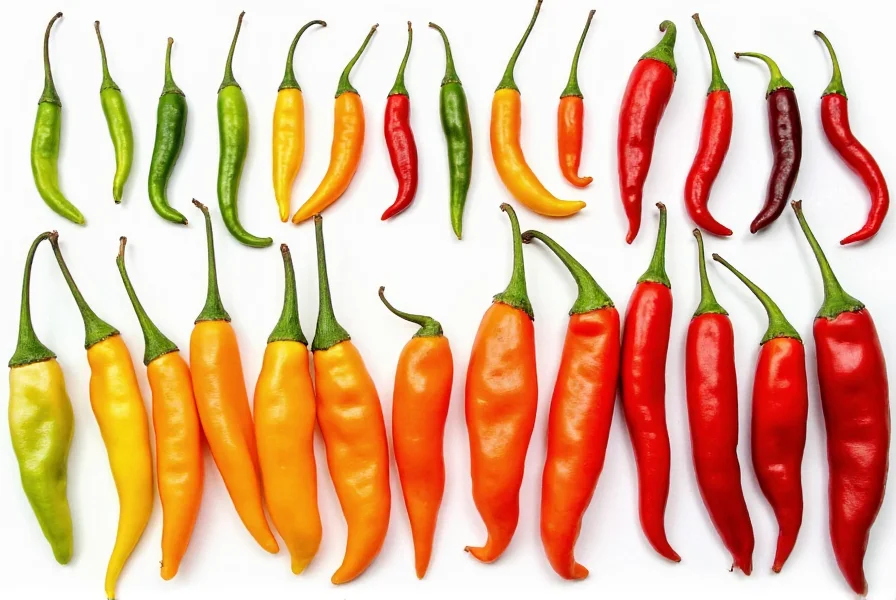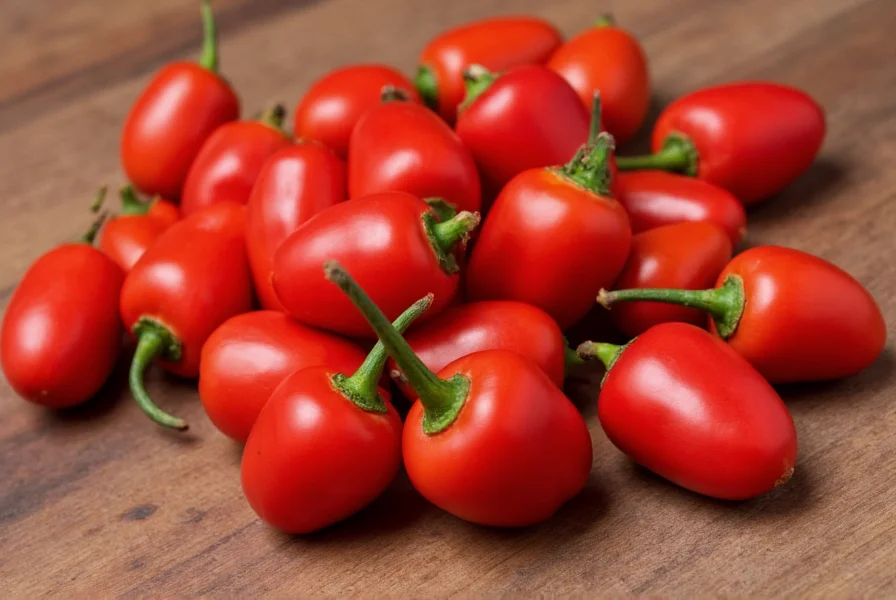Capsaicin, the fiery compound that gives chili peppers their characteristic heat, has fascinated scientists, chefs, and health researchers for centuries. Understanding this powerful substance requires clarifying a fundamental misconception: capsaicin isn't a pepper variety at all. When people search for “capsaicin pepper,” they're typically seeking information about the compound that creates spiciness in peppers, not a specific cultivar.
The Science Behind Capsaicin
Discovered in 1816 by Christian Friedrich Bucholz and later isolated in pure form in 1876 by John Clough Thresh, capsaicin (8-methyl-N-vanillyl-6-nonenamide) is a lipophilic alkaloid produced by chili peppers as a defense mechanism against herbivores. This compound specifically targets TRPV1 receptors in mammals – the same receptors that respond to actual heat, which explains why spicy food creates a burning sensation.
Contrary to popular belief, the seeds of chili peppers don't contain the highest concentration of capsaicin. The placental tissue surrounding the seeds holds the greatest concentration, with decreasing amounts in the seeds themselves, then the flesh of the pepper. This distribution pattern explains why removing seeds and membranes significantly reduces a pepper's heat level.
Pepper Varieties and Capsaicin Concentration
Different pepper varieties contain varying amounts of capsaicin, measured using the Scoville Heat Unit (SHU) scale. The following table shows common peppers and their capsaicin content:
| Pepper Variety | Scoville Heat Units | Capsaicin Concentration | Common Uses |
|---|---|---|---|
| Bell Pepper | 0 SHU | 0.00% | Culinary, raw consumption |
| Jalapeño | 2,500–8,000 SHU | 0.022–0.043% | Salsas, pickling |
| Habanero | 100,000–350,000 SHU | 0.10–0.20% | Hot sauces, Caribbean cuisine |
| Ghost Pepper (Bhut Jolokia) | 800,000–1,041,427 SHU | 0.45–0.78% | Extreme heat challenges |
| Carolina Reaper | 1,400,000–2,200,000 SHU | 0.88–1.20% | World record holder for hottest pepper |
How Capsaicin Affects the Human Body
When capsaicin contacts mucous membranes or skin, it triggers a neurological response that the brain interprets as burning pain. This reaction explains why drinking water provides little relief from spicy food – capsaicin is hydrophobic, so dairy products containing casein (like milk or yogurt) offer more effective relief by binding to the compound.
Regular consumption of capsaicin-containing peppers leads to desensitization of TRPV1 receptors, which is why frequent consumers of spicy food develop higher tolerance levels. This adaptation occurs because capsaicin temporarily depletes substance P, a neurotransmitter responsible for pain signals.
Health Benefits and Considerations
Research into capsaicin’s health effects reveals several potential benefits. Studies published in the Journal of Agricultural and Food Chemistry indicate that capsaicin may boost metabolism by approximately 5% and increase fat oxidation by 16%. Other research suggests potential anti-inflammatory properties and pain relief applications.
However, excessive consumption can cause gastrointestinal distress, particularly in individuals with sensitive digestive systems. The European Food Safety Authority recommends that daily capsaicin intake should not exceed 1.5 mg per kilogram of body weight to avoid adverse effects.
Practical Applications Beyond Cuisine
Beyond culinary uses, capsaicin has important applications in various fields. Law enforcement uses it in pepper spray formulations (typically 0.18–1.5% capsaicin), while medical researchers study its potential in topical pain relief creams. The compound also serves as a natural pesticide in agricultural settings due to its effectiveness against mammalian pests while being harmless to birds, which lack TRPV1 receptors.
Safety and Handling Tips
When working with high-capsaicin peppers, always wear gloves to prevent skin irritation. Avoid touching your face, especially eyes, after handling hot peppers. If you experience skin irritation, apply milk or vegetable oil rather than water, as capsaicin dissolves better in fats. For severe reactions, seek medical attention – particularly important when working with super-hot varieties like the Carolina Reaper.
Understanding the relationship between capsaicin and peppers transforms how we approach spicy foods. Rather than searching for a non-existent “capsaicin pepper,” recognizing capsaicin as the heat-producing compound helps consumers make informed choices about pepper selection, culinary applications, and potential health benefits. This knowledge empowers both casual food enthusiasts and professional chefs to harness the power of capsaicin safely and effectively.

Is capsaicin the same as cayenne pepper?
No, capsaicin is the chemical compound that creates heat in peppers, while cayenne pepper is a specific variety of chili pepper that contains capsaicin. Cayenne typically measures between 30,000–50,000 Scoville Heat Units.
Can you remove capsaicin from peppers?
You cannot completely remove capsaicin from peppers, but you can significantly reduce heat by removing the placental tissue and seeds where capsaicin concentration is highest. Soaking peppers in dairy products like milk can also help neutralize some capsaicin.
Does cooking destroy capsaicin?
Cooking doesn't destroy capsaicin – it's heat-stable up to temperatures around 400°F (204°C). However, cooking can distribute capsaicin more evenly throughout a dish. Frying may slightly reduce capsaicin levels through evaporation, but the compound remains largely intact.
Why don't birds feel the heat from capsaicin?
Birds lack the TRPV1 receptors that mammals have, which is why they don't experience the burning sensation from capsaicin. This evolutionary adaptation allows birds to eat chili peppers and disperse the seeds without damaging them, as birds' digestive systems don't break down the seeds.
What's the difference between capsaicin and piperine?
Capsaicin is the compound that creates heat in chili peppers, while piperine produces the heat in black pepper. They affect different receptors – capsaicin targets TRPV1 receptors, while piperine affects TRPV1 and other receptors. This is why the heat sensation from chili peppers differs from that of black pepper.











 浙公网安备
33010002000092号
浙公网安备
33010002000092号 浙B2-20120091-4
浙B2-20120091-4